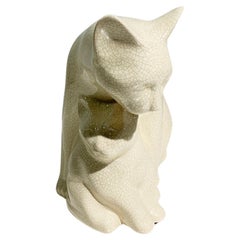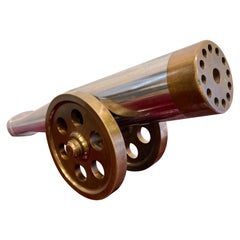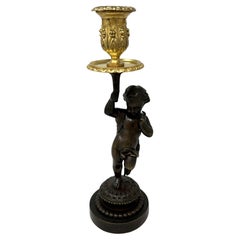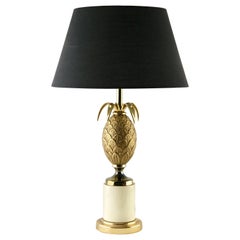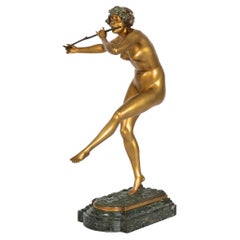French Sculptures
Mid-20th Century Art Deco French Sculptures
Ceramic
1950s Art Deco Vintage French Sculptures
Aluminum, Bronze
Mid-19th Century Grand Tour Antique French Sculptures
Brass, Bronze, Ormolu
20th Century French Sculptures
Stoneware
1960s Hollywood Regency Vintage French Sculptures
Brass
20th Century Art Deco French Sculptures
Marble, Bronze
19th Century Regency Antique French Sculptures
Griotte Marble, Bronze
Early 20th Century Art Deco French Sculptures
Terracotta
19th Century Louis XVI Antique French Sculptures
Porcelain, Paint
Mid-20th Century Art Deco French Sculptures
Terracotta
1890s Antique French Sculptures
Marble, Bronze
20th Century Greco Roman French Sculptures
Terracotta
21st Century and Contemporary French Sculptures
Bronze
1870s Antique French Sculptures
Bronze
20th Century Art Deco French Sculptures
Marble, Bronze
Mid-19th Century Art Nouveau Antique French Sculptures
Bronze
19th Century Grand Tour Antique French Sculptures
Bronze
Early 1800s Empire Antique French Sculptures
Bronze
Early 20th Century Art Deco French Sculptures
Marble, Bronze
1920s Art Deco Vintage French Sculptures
Marble, Bronze
Late 19th Century Antique French Sculptures
Bronze
1930s Renaissance Revival Vintage French Sculptures
Stucco
Mid-20th Century Art Deco French Sculptures
Bronze
20th Century Modern French Sculptures
Aluminum
1960s Mid-Century Modern Vintage French Sculptures
Sandstone
20th Century Victorian French Sculptures
Paint
1820s Restauration Antique French Sculptures
Bronze
19th Century Romantic Antique French Sculptures
Bronze
1910s Art Nouveau Vintage French Sculptures
Marble, Bronze
19th Century Antique French Sculptures
Bronze
Early 20th Century Art Nouveau French Sculptures
Spelter
Early 20th Century Art Deco French Sculptures
Marble, Bronze
1940s Mid-Century Modern Vintage French Sculptures
Ceramic
21st Century and Contemporary French Sculptures
Iron
19th Century Neoclassical Antique French Sculptures
Bronze
1920s Art Deco Vintage French Sculptures
Marble, Metal
1850s Antique French Sculptures
Marble, Bronze
Late 19th Century Antique French Sculptures
Bronze
19th Century Antique French Sculptures
Marble, Bronze, Ormolu
20th Century Art Nouveau French Sculptures
Crystal
19th Century Antique French Sculptures
Metal
21st Century and Contemporary Neoclassical French Sculptures
Epoxy Resin
19th Century Napoleon III Antique French Sculptures
Bronze
Late 19th Century Rococo Antique French Sculptures
Brass
1960s Post-Modern Vintage French Sculptures
Marble, Brass
19th Century Sporting Art Antique French Sculptures
Bronze
Late 19th Century Antique French Sculptures
Marble, Bronze
Mid-20th Century Art Deco French Sculptures
Marble, Bronze
1970s Hollywood Regency Vintage French Sculptures
Amethyst, Bronze
1930s Art Deco Vintage French Sculptures
Bronze
1930s Art Deco Vintage French Sculptures
Bronze
Early 20th Century French Sculptures
Terracotta
1950s Vintage French Sculptures
Metal
Late 19th Century Neoclassical Revival Antique French Sculptures
Bronze
20th Century French Sculptures
Metal
19th Century Art Nouveau Antique French Sculptures
Plaster
2010s French Sculptures
Ceramic
Late 20th Century Art Nouveau French Sculptures
Glass
1960s Art Deco Vintage French Sculptures
Plaster
Late 19th Century Antique French Sculptures
Marble
Read More
He Wrote ‘Oedipus Rex,’ but Do You Know What He Looked Like?
The Greek tragedian is said to have been handsome in his day.
These Soft Sculptures Are Childhood Imaginary Friends Come to Life
Miami artist and designer Gabriela Noelle’s fantastical creations appeal to the Peter Pan in all of us.
Salvatori Commissioned Several Famous Architects to Create Miniature Homes in Stone
Gabriele Salvatori explains how the COVID lockdowns inspired his design company's latest collection, the Village.
Christopher Norman Is Turning the Cast-Off Urban Trees of Los Angeles into Art
With a World War II–era milling machine, the California artist crafts poetic, sculptural furniture pieces.
These Human-Size Ceramic Hares Evoke Serious Emotions
Swedish artist Margit Brundin's large anthropomorphic animal sculptures are on view for the first time in the United States at Dienst + Dotter Antikviteter, in New York.
Tour the Wabi-Sabi New York Apartment of Andrianna Shamaris
As her sun-filled home reveals, the furniture maker and dealer puts a contemporary spin on antiques from around the globe.
Vicente Wolf’s Tips for Finding — and Living with — Eastern Treasures
The A-list designer shares his expertise on choosing authentic objects and displaying them with style.
Rodrigo Rivero Lake’s Mexico City Showroom Is a Museum-Worthy Trove of Spanish Colonial and Asian Antiques
The dealer and curator has spent the past 50 years amassing a collection of exceptional art, furniture and architectural elements that trace the cultural influence of the Spanish empire from Europe to the Americas and beyond.
